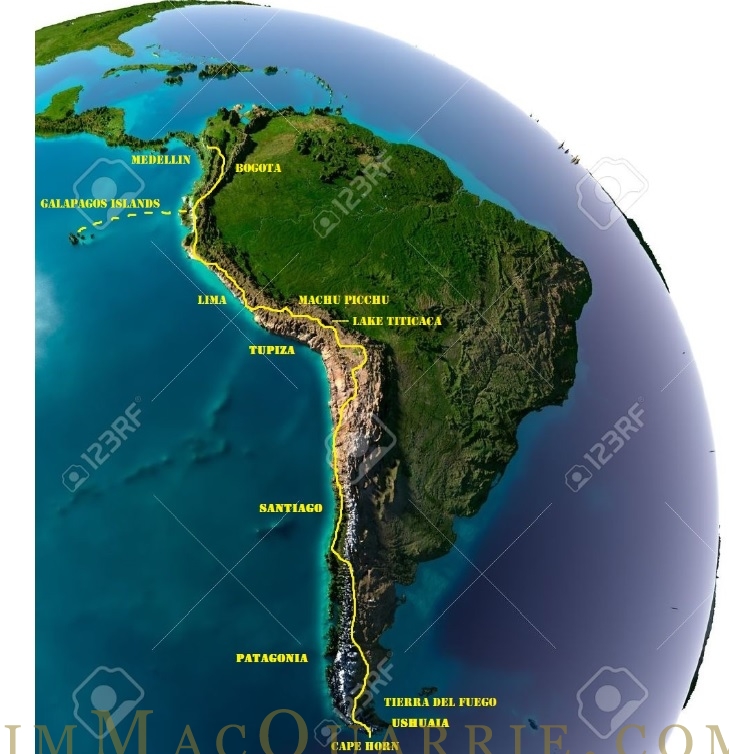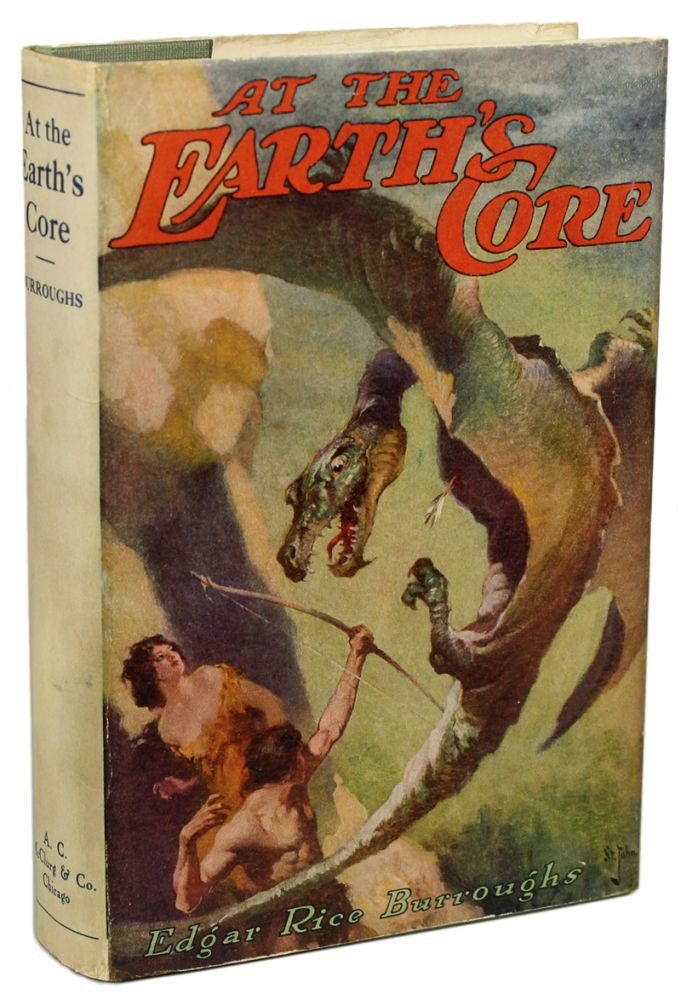Life and Death in the Andes: The Strange Places Book Ideas Come From
posted on September 7th, 2015 in Andes Mountains, Life and Death in the Andes (New Book)

Life and Death in the Andes’ Travel Route
The journey down the spine of the Andes, from Colombia to Tierra del Fuego, actually began several years before I left. The idea for such a voyage had been in the back of my mind for several decades, actually, but didn’t crystallize until I finally pitched the idea of a book to my editor at Simon and Schuster, Bob Bender, in 2009. If you really want to know how far back this idea extends, however, it’s best summarized in the first part of the preface of Life and Death in the Andes:
When I was a boy, growing up in Nevada, during the long hot summers I used to read a lot. On burning days when the temperature outside hovered well over a hundred degrees and when if you tried to cross an asphalt street you quickly seared your bare feet, I would remain inside, lie on my back on our floral-patterned couch, open a book–and almost immediately would find myself plunging across icy seas or tunneling deep into other worlds. One of my favorite authors growing up was a German-American sailor named William Willis, who wrote true-life accounts of his various adventures. Willis had sailed on a square rigged ship as a teenager and, later in life, eventually made his way to the western coast of South America. There, he lashed together some balsa logs and sailed across the Pacific Ocean—for no other reason than adventure. Willis’ descriptions of being alone on his raft at night, peering down into an inky blackness where he witnessed great luminescent creatures rising from the deep, still haunts my imagination. At around the same time, when I was about eight or nine years old, I stumbled across Edgar Rice Burrough’s “hollow earth” series, which tell the tale of how a man burrowed down through the Earth’s crust with a machine, only to discover an exotic, interior world called Pelucidar. Within the Earth’s interior, it turned out, existed a world full of half-naked tribes and powerful beasts (mostly dinosaurs), rich, luxuriant vegetation, beautiful women, and so much adventure that I remember spending an entire summer there, immersed in a world as far removed from the deserts of Nevada as the Earth is from Mars.

1st (1922) edition of Burrough’s “At the Earth’s Core”
Many years later, after eventually becoming a writer and documentary filmmaker, I was touring with a film I’d recently made on the rainforest, a film that explored the spirit world of a certain Amazonian tribe, when a magazine writer asked me what had motivated me to spend so much time in the Amazon. Without even thinking, I blurted out “Edgar Rice Burroughs.” And, upon reflection, I realized it was true. Surprised, the journalist told me he’d gone to public school with Burrough’s grandson. About a month later, a package arrived at my door. Inside was an original edition of Burrough’s At The Earth’s Core, published in 1914, the first in the “hollow earth” series. Burrough’s grandson had written an inscription on the frontispiece, saying that his grandfather would have been pleased to know that his work had propelled me to the far reaches of the Amazon. It was while fingering through its pages that I realized that some of the worlds we visit in books when we are children become so buried within our minds that, even though they may remain deeply submerged, they still may prompt us to later subconsciously search for them—much as adoptees might search for their biological parents, or as adults might search for long-lost childhood friends.
Although motivation remain as mysterious as creatures of the deep, I do credit Burroughs with having planted a seed that eventually took me to South America, a continent that, in many ways, contains everything that the best of Burrough’s writing ever did: a massive mountain chain, epic in its proportions; colossal continental plates that continually collide, thrusting up volcanoes and even lifting lakes twelve thousand feet up into the air, and a cloud-wreathed rainforest that stretches more than half way across the continent–a jungle so replete with sloths, giant snakes, bizarre animals and un-contacted tribes that you’d think you had somehow left the modern world and had stumbled into a world as primeval as that of Pelucidar.
If you’re curious, you can read the entire preface here:
Next Up: Getting Ready For a Journey the Length of South America
